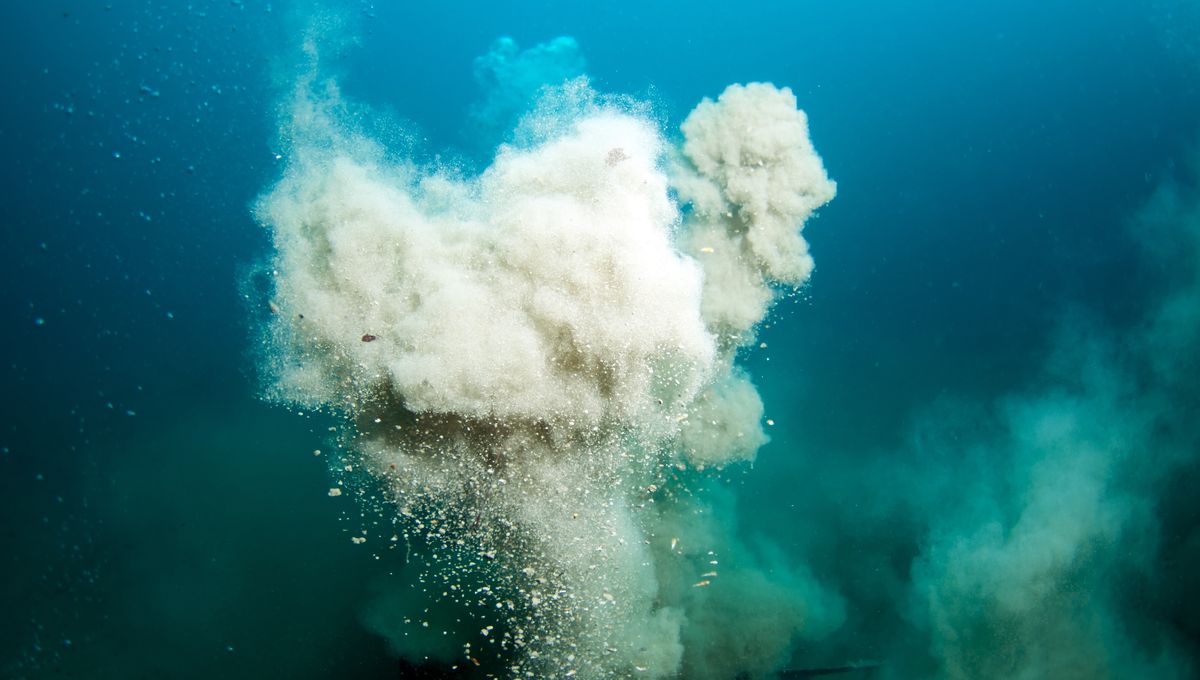
Researchers have recently discovered an impressive hydrothermal system in the western Pacific Ocean, and according to the team, it’s “challenging long-held assumptions” about where hydrogen is generated beneath the waves.
The rest of this article is behind a paywall. Please sign in or subscribe to access the full content.
To say this newly found field is impressive isn’t an exaggeration; the Kunlun hydrothermal system, as it’s been dubbed, is made up of 20 round-ish seafloor craters that are hundreds of meters in diameter, spread over an area that stretches 11.1 square kilometers (4.3 square miles). That’s over 100 times larger than the Atlantic Ocean’s Lost City. No, not that one – it’s a hydrothermal field famous as a natural laboratory for studying how life on Earth may have originated around these underwater hot springs.
But it’s not just the size of the field that’s significant, say the researchers. “The Kunlun system stands out for its exceptionally high hydrogen flux, scale, and unique geological setting,” said Professor Weidong Sun, the corresponding author of the study describing the find, in a statement.
The Kunlun system spews out a lot of hydrogen. Combining measurements that suggested high hydrogen concentrations in the fluids surrounding the system with the flow of the water and the area from which it was discharged, the researchers calculated that the Kunlun field contributes at least 5 percent of the global abiotic (not produced by living organisms) hydrogen output from all underwater sources. That’s a pretty significant percentage for just one system.
Another interesting element to this hydrothermal field is what drives the production of all that hydrogen: serpentinization. This is a process in which olivine-rich rocks react with water, producing serpentine minerals and, crucially, hydrogen. Typically, this has been assumed to only take place in mid-ocean ridges – the Lost City is a key example of this, located in the mid-Atlantic ridge.
The Kunlun system, however, sits within an oceanic plate, suggesting that a ridge environment isn’t a requirement for this process to occur. “It shows that serpentinization-driven hydrogen generation can occur far from mid-ocean ridges, challenging long-held assumptions,” said Sun.
Like the Lost City, it’s also hoped that Kunlun can function as a natural laboratory for researchers studying the origin of life – and might even make a better candidate for where it may have started.
“Compared to the carbonate towers formed in the Lost City, these pipes/pits provide a more sustained and stable evolutionary time frame, offering a potentially more suitable environment for the evolution of early life,” the study authors write.
It certainly seems like the Kunlun system is geared up to support a wide range of sea critters. “What’s particularly intriguing is its ecological potential,” said Sun. “We observed diverse deep-sea life thriving here – shrimp, squat lobsters, anemones, and tubeworms – species that may depend on hydrogen-fueled chemosynthesis.”
The study is published in Science Advances.
Source Link: Massive Hydrogen-Rich Hydrothermal System Discovered In Pacific 100 Times Larger Than Atlantic's "Lost City"